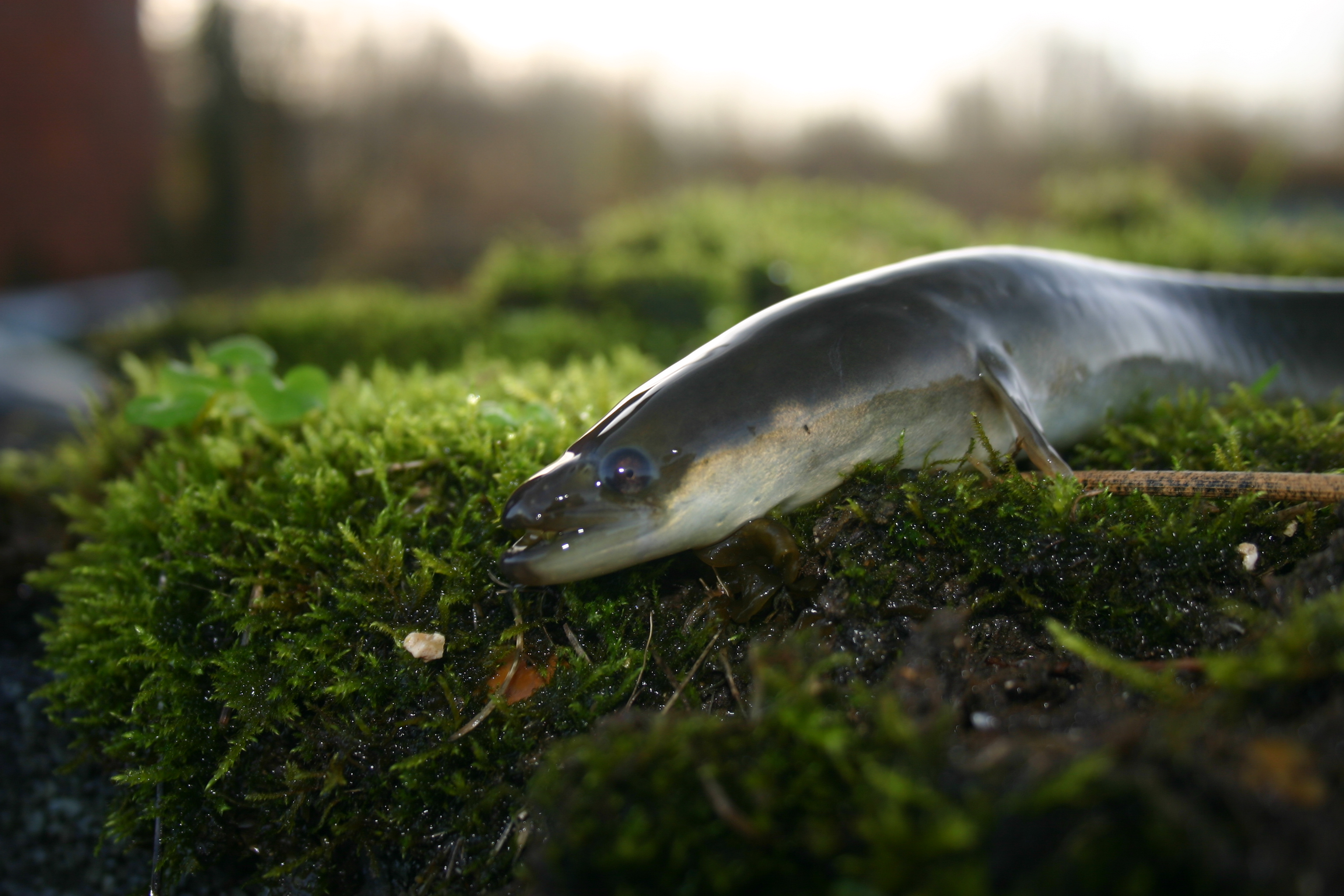Biodiversity
Related Links
Latest News
A Starring Role for Nantclwyd’s Lesser Horseshoe Bats
22.05.2015
Living Landscape Brought Back to Life
05.12.2014
Facebook Page
European eel
The European eel is the only fish in Europe to migrate from rivers to the sea to spawn. For many years, this species has been surrounded by mystery, and only now are scientists able to understand its unusual life history.
 Description and identification: The European eel is a long serpentine fish. It has small pectoral fins, minute scales embedded in its skin and a lower jaw longer than the upper jaw. It is the only species of eel found in the UK.
Description and identification: The European eel is a long serpentine fish. It has small pectoral fins, minute scales embedded in its skin and a lower jaw longer than the upper jaw. It is the only species of eel found in the UK.
Habitat: The habitats used by eels change throughout their lives. In the UK eels are found in coastal waters, estuaries, rivers and streams. Eels can actually survive out of water and cross overland between water bodies.
Diet: As larvae, eels feed on microscopic plankton, whilst as sexually mature adults they stop feeding altogether. Maturing eels in rivers feed on fish and invertebrates.
Ecology and reproduction: The European eel has an interesting life cycle, which starts and ends in the Sargasso Sea in the western Atlantic Ocean. Eel larvae, known as ‘leptocephalli’, spend three years floating as plankton and are carried by the Gulf Stream to the coasts of Europe. Here they metamorphosise into transparent ‘glass eels’ and enter estuaries with spring tides. They migrate into freshwater in large numbers as ‘elvers’ which are about 5cm long. The elvers travel upstream through the river systems where they spend up to 20 years maturing, before making the return journey down-river and back across the Atlantic. The eels undergo changes to adapt to the marine environment and their skins become silvery. Whilst in the sea they do not feed, but rely on stored energy to make the journey of 4000 miles to their spawning grounds. After spawning the eels will die.
Distribution: European eels are found across Europe, parts of Russia and North Africa, in rivers draining to the Mediterranean, North and Baltic Seas.
Threats: Populations of European eels have declined dramatically in the last 30 years – for example the number of glass eels has dropped by over 90% since 1980. However the reasons behind this precipitous decline are poorly understood. It is likely that a combination of factors is responsible including habitat loss and degradation, obstructions in rivers (e.g. dams), over-fishing and climate change.
Status: The European eel is listed as Critically Endangered on the IUCN Red List and is protected under UK and European Law. It is a priority for conservation at a UK and Wales level.



